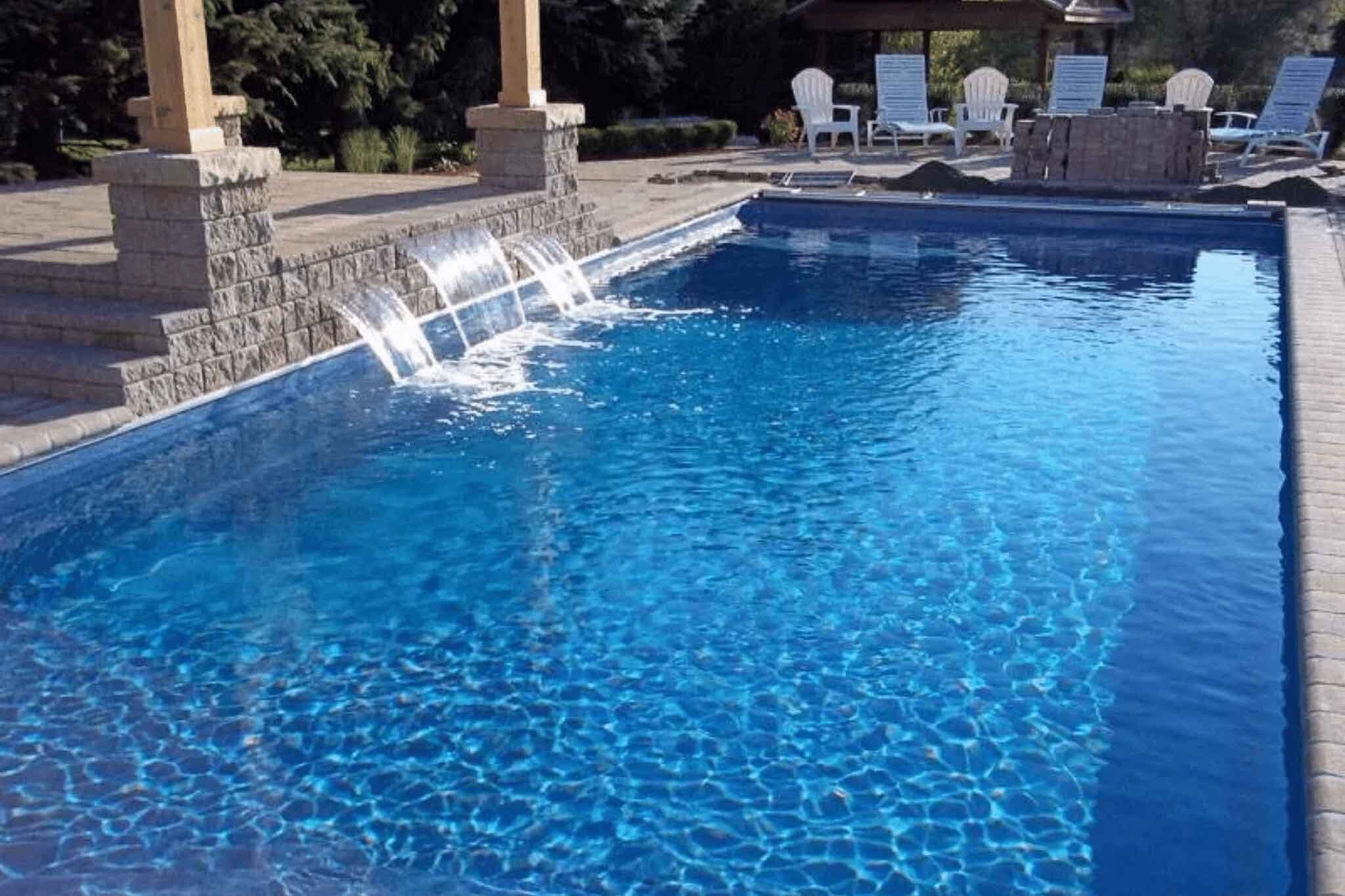All About Fiberglass Swimming Pools
Fiberglass swimming pools are made of a fiberglass mold. The interior is treated with a weather-resistant gel-coating and creates the pool’s smooth finish. This coating also makes fiberglass pools resistant to algae build up and makes them slightly easier (and cheaper) to maintain.
Unlike vinyl and concrete (gunite) swimming pools that need external supports to create their durability, shape, and structure, each fiberglass swimming pool’s durability and strength comes from the fiberglass shell, and each pool comes delivered “as is.” That is to say, each fiberglass pool has been fully built by the manufacturer and arrives at your home in a fully formed shell or mold. All of the features in a fiberglass swimming pool are fabricated at the warehouse. For example, if your swimming pool will have steps, built-in seats, or a tanning ledge, the pool would arrive with those options already built into the mold. Similarly, all the cutouts for drains returns and skimmer are manufactured and delivered to the homeowner completely assembled.
While a fiberglass swimming pool comes in predetermined shapes and sizes, finding the right swimming pool to match your preferences shouldn’t be a problem as most manufacturers offer a plethora of shapes, sizes, and other available features such as pool depth, color, built-in seating and ledges, steps, and more.
This beautiful fiberglass pool with waterfall and stone patio was built by our NPC Premium Member, Blue Lagoon Pools. Learn more about this builder.
Fiberglass Swimming Pool Installation
Since a fiberglass swimming pool is delivered to your door (or backyard) already constructed, on-site construction is typically minimal compared to other types of swimming pools. Even though a fiberglass swimming pool is not built on-site, the contractor still has to excavate the area and get the electrical and plumbing ready for installation.
If you’ve heard the adage, “Measure twice, cut once,” we recommend applying the same sentiment and have your contractor “Measure twice, deliver and install once.” As fiberglass swimming pools are delivered fully assembled, there must be enough clearance for the swimming pool and the equipment delivering it (e.g., crane or flatbed truck) to the installation site.
While fiberglass’s benefits as a building material, namely that it’s light, long-lasting, and strong, make it an ideal material for a swimming pool, its weight necessitates specific steps in its installation. Firstly, the contractor has to make sure the swimming pool is installed on entirely level ground. To create a level grade, sand or gravel is typically used to appropriately grade the land.
In addition to ensuring the ground is level, contractors must make sure a fiberglass pool is adequately filled. Just like there is a unique curing process for concrete pools, there is a special filling process for fiberglass pools. This process requires the contractor to make sure there is equal pressure on the wall (sides) of the pool. To ensure that fiberglass pools properly stay in the ground, fiberglass pools are anchored in place by maintaining some water in them at all times and by the concrete edge built around the rim or collar of the swimming pool mold. As the pool is being filled with water, a contractor must simultaneously backfill the excavated hole to maintain the equal pressure required. Sand is the most commonly used material to backfill fiberglass pools.
If you’ve heard about a fiberglass swimming pool “popping out” or “floating” later, it’s because the pool wasn’t installed properly in the first place. As mentioned, all fiberglass pools are anchored in place by maintaining some water in them at all times and by the concrete edge built around the rim or collar of the swimming pool mold. Any swimming pool can detach from its original location due to water build-up under the swimming pool. The pressure of the water caused by gravity’s force can eventually force a pool from the ground. This type of pressure is called hydrostatic pressure. To avoid this potential issue, proper drainage must be installed by the builder. Find more on our blog >>
